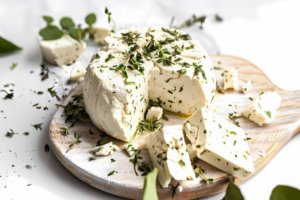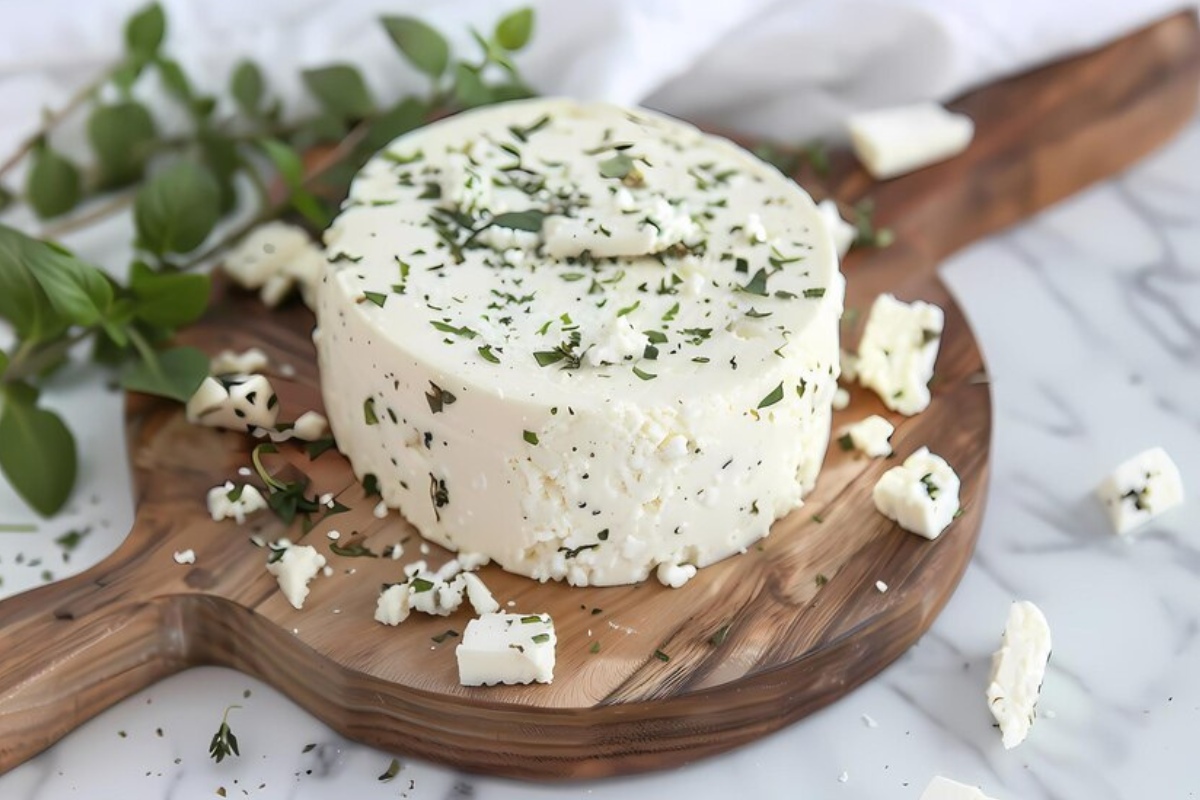Ricotta cheese is a beloved ingredient that plays a central role in Italian cuisine and is now a staple in kitchens worldwide. Whether you’re a fan of savory dishes like lasagna or sweet desserts like cannoli, ricotta offers a versatile, creamy texture that elevates every recipe it touches. But what exactly is ricotta cheese? How is it made, and how can you use it in your cooking? This guide explores everything you need to know about ricotta cheese, from its rich history to the best ways to use it in the kitchen. Let’s dive deep into the world of this versatile cheese and learn how to incorporate it into both traditional and modern dishes.
What is Ricotta Cheese?
At its core, ricotta cheese is a fresh, soft cheese made from whey, the liquid left over from other cheesemaking processes. This makes ricotta unique from other cheeses that are made primarily from curds. Its name, derived from the Italian word for “recooked,” reflects the traditional process of reheating whey to create this delightfully creamy cheese.
Unlike aged cheeses like cheddar or parmesan, ricotta is fresh, meaning it contains more moisture, which gives it its soft and fluffy texture. It’s often described as creamy and slightly sweet, with a light flavor that complements both savory and sweet recipes.
In terms of ingredients, ricotta can be made from the milk of cows, sheep, goats, or even water buffalo, although cow’s milk ricotta is the most common. It can be used fresh as a spread, a filling, or as a base in various recipes. This versatility has made ricotta cheese a kitchen favorite across different cultures.
The History of Ricotta Cheese
Ricotta traces its roots to ancient Rome, where it was first made as a way to use leftover whey from cheesemaking. Historically, ricotta was often made by shepherds, who would make cheese from the milk of their flock and then use the leftover whey to create ricotta. Over the centuries, it has evolved to become one of the most popular and versatile cheeses in Italian cuisine, integral to dishes like lasagna, cannoli, and ravioli.
Types of Ricotta Cheese
Although most people think of ricotta as one simple type of cheese, it actually comes in several varieties, each with its own unique flavor, texture, and culinary use. Understanding these types can help you choose the best ricotta for your recipes.
1. Traditional Ricotta
This is the most common type of ricotta that you’ll find in grocery stores. It is fresh, soft, and moist, making it perfect for dishes like lasagna, stuffed shells, and even breakfast items like ricotta pancakes. Its mild flavor makes it highly versatile, lending itself to both savory and sweet applications.
2. Ricotta Salata
Ricotta salata is a firmer, salted version of traditional ricotta. After being made, it is pressed and aged, which gives it a crumbly texture similar to feta cheese. This type of ricotta is often grated over salads, pastas, and grilled vegetables. Its slightly tangy flavor adds depth to dishes without overpowering other ingredients.
3. Ricotta Infornata
This type of ricotta is baked, which gives it a slightly firmer texture and a golden-brown exterior. The baking process enhances the flavor, making ricotta infornata perfect for serving on its own, drizzled with olive oil, or as a complement to salads and cured meats.
4. Ricotta Forte
Also known as strong ricotta, this is a more pungent, fermented version of ricotta. Originating in Southern Italy, ricotta forte is highly flavorful, often spread on bread or used in pasta sauces for an extra punch of richness.
Nutritional Value of Ricotta Cheese
Ricotta cheese isn’t just delicious—it’s also packed with nutrients. Depending on the type of milk used to make it, ricotta can be a great source of protein, calcium, and essential vitamins like B12 and riboflavin.
Here’s a closer look at the nutritional breakdown:
- High in Protein: Ricotta is an excellent source of whey protein, which is easily digestible and great for muscle recovery.
- Low in Fat (Skim Varieties): Part-skim ricotta contains less fat compared to full-fat cheeses, making it a healthier option for those watching their caloric intake.
- Rich in Calcium: One serving of ricotta provides a good amount of calcium, which is essential for maintaining strong bones and teeth.
- Low in Lactose: While ricotta is made from whey, it contains less lactose than other dairy products, making it easier for people with lactose sensitivities to digest.
Health Benefits of Ricotta Cheese
Given its nutritional profile, ricotta cheese offers several health benefits:
- Promotes Muscle Recovery: The high whey protein content supports muscle recovery and repair, making it a great post-workout snack.
- Supports Bone Health: Thanks to its high calcium content, ricotta contributes to strong bones and can help prevent osteoporosis.
- Low Lactose Content: For individuals with lactose intolerance, ricotta is easier to digest than many other dairy products due to its lower lactose levels.
- Weight Management: Low-fat ricotta varieties provide a high-protein, low-calorie option for those aiming to lose or manage their weight.
How to Make Ricotta Cheese at Home
Although store-bought ricotta is widely available, making your own at home is easier than you might think—and the results are often fresher and tastier.
Ingredients:
- 1 quart whole milk (or skim for a lighter version)
- 1/4 cup lemon juice or white vinegar
- 1/2 teaspoon salt
Instructions:
- Heat the Milk: Pour the milk into a large pot and heat it over medium heat. Stir occasionally to prevent scorching. When the milk reaches about 185°F (just before it boils), turn off the heat.
- Add Lemon Juice/Vinegar: Slowly stir in the lemon juice or vinegar. You should see the milk begin to curdle and separate into curds and whey.
- Strain the Curds: Line a colander with cheesecloth and pour the curds and whey into the colander. Allow it to drain for 15–30 minutes, depending on how creamy or firm you want your ricotta.
- Enjoy: Scoop the fresh ricotta into a container and refrigerate it. Use within a week for the best taste and texture.
If you’re curious about using different breads with your homemade ricotta, try experimenting with this guide on Best Bread for French Toast to elevate your recipes.
Cooking with Ricotta Cheese: Popular Recipes and Uses.

One of the best things about ricotta cheese is its versatility. Whether you’re whipping up a quick breakfast, a savory dinner, or a sweet dessert, ricotta fits perfectly into any meal. Here are some of the most popular ways to use ricotta cheese.
1. Lasagna
Perhaps the most famous use for ricotta cheese, lasagna is a rich, layered pasta dish that features ricotta as a creamy filling between layers of pasta and sauce. Ricotta helps balance the flavors of tomato sauce, meat, and mozzarella, creating a perfect harmony of textures.
2. Ravioli
Ricotta is often used as a filling for stuffed pasta like ravioli. The mild flavor of the cheese pairs well with ingredients like spinach, herbs, and even ground meats.
3. Cannoli
A staple in Italian desserts, cannoli are crispy pastry tubes filled with sweetened ricotta. For an extra indulgent twist, mix the ricotta with chocolate chips, candied fruit, or even a dash of vanilla extract.
4. Ricotta Cheesecake
Lighter and fluffier than traditional cheesecake, ricotta cheesecake swaps out heavier cream cheese for the airy texture of ricotta. The result is a deliciously creamy dessert that’s not overly rich.
5. Ricotta Toast
For a quick and nutritious breakfast, spread ricotta cheese on toasted sourdough bread and top with honey, fruit, or a sprinkle of cinnamon. This simple dish makes a great breakfast or light snack, packed with protein and flavor.
Creative Uses for Ricotta Cheese
While ricotta is most commonly used in Italian cuisine, its mild flavor makes it a great addition to a variety of dishes from different cultures.
1. In Salads
Use ricotta as a substitute for feta or goat cheese in salads. Its creamy texture pairs well with fresh greens, roasted vegetables, and even fruits like pears or apples.
2. As a Pizza Topping
Instead of traditional mozzarella, try dolloping ricotta onto pizza. Its creamy texture works wonderfully with bold toppings like prosciutto, arugula, and olives.
3. In Smoothies
Add a spoonful of ricotta to your morning smoothie for a protein boost. It blends well with fruits like berries, bananas, and peaches, giving your smoothie a creamy texture without overpowering the flavors.
Storing and Freezing Ricotta Cheese
Ricotta cheese is best stored in the refrigerator in an airtight container. Fresh ricotta will typically last for about a week. If you’re not planning to use it right away, you can freeze ricotta for up to three months. However, note that freezing may alter its texture slightly, so it’s best to use frozen ricotta in cooked dishes like lasagna or stuffed pasta.
Frequently Asked Questions (FAQs)
1. Can you eat ricotta cheese raw?
Yes, ricotta is often eaten raw as a spread or topping. Its fresh, creamy texture makes it perfect for spreading on bread, adding to salads, or mixing into desserts.
2. What is the difference between ricotta and cottage cheese?
While both are soft, fresh cheeses, ricotta is made from whey, while cottage cheese is made from curds. Ricotta has a smoother texture compared to the lumpier, curd-like consistency of cottage cheese.
3. Is ricotta cheese good for weight loss?
Yes, especially low-fat or part-skim versions of ricotta. It is high in protein and lower in fat compared to many other cheeses, making it a great option for those on a calorie-restricted diet.
4. Can ricotta cheese be frozen?
Yes, but freezing ricotta can change its texture. It may become slightly grainy, so it’s best used in cooked dishes after freezing.
5. How long does ricotta last in the fridge?
Fresh ricotta will last about a week when stored properly in an airtight container in the refrigerator.
Conclusion
Ricotta cheese is more than just a simple ingredient it’s a versatile, nutrient-packed food that can elevate both savory and sweet dishes. Whether you’re making a traditional Italian lasagna, experimenting with new salad combinations, or simply spreading it on toast, ricotta is a fantastic addition to any meal. By understanding its types, health benefits, and various uses, you can fully appreciate all that this creamy cheese has to offer.
So the next time you’re in the kitchen, don’t hesitate to reach for ricotta and explore its endless culinary possibilities!


1 thought on “Ricotta cheese”